Years ago, before I got into photography, I was a preschool teacher. I found that spending time with young children helped awaken my own creativity because I was able to observe how they tapped into their own creativity on a daily basis. Kids are amazingly creative little people – they’re fearless creators who allow themselves to explore new ideas through play. In this article you’ll discover 10 lessons that you can learn from children to help you become a better and more creative iPhone photographer.

1. Regain Your Childlike Sense Of Wonder
Have you ever watched a child experiencing something for the first time? The look of amazement on their face is priceless. That’s because the world is completely novel to them.
As we age, we forget how magical the world can be. We just get used to clouds, sunsets, snow, and countless more experiences that we stop noticing them so much.

But it’s possible to recapture that childlike sense of wonder if you simply pretend you know nothing about the world. Lose your vocabulary. Lose your memories. Choose to live in the moment and experience what is unfolding before you as if it was for the very first time.
If you need some help with this, I suggest simply laying on your back outside and watching the clouds go by. Let your imagination run wild as you see different things in them.

As weird as it may sound, magnets also give me a sense of childlike wonder. How on earth do they work??? It doesn’t even matter, really. Let it captivate you.
2. Ask Questions Constantly
“Why?” If you’ve ever been around a toddler, you know this is a popular question! Sure, it can easily drive you insane, especially if they ask it five times in a row.
But you have to keep in mind that they really want to gain an understanding of whatever they’re asking about. Children have huge gaps in their knowledge base, so they’re constantly trying to fill them by asking questions.
No matter how long you’ve been shooting, you will have gaps in your photography skills. So ask other photographers questions. Ask your fans questions. Ask me questions – I don’t mind how silly you think it is!

Most importantly, ask “why?” You can ask why of others and their work, or you can ask yourself “why” questions. Why did you choose that composition? Why does this angle work better than another angle? Why did you even take the picture in the first place? Fill those gaps in your knowledge.
3. Focus On A Color
When I taught preschool, we would teach units that focused on a specific color. The children would start focusing on that color outside of the classroom. If we focused on red, for example, they would suddenly notice that stop signs are red. Mom has a red car. The flower in the yard is red. Everything that is red starts to jump out at them.

This is an easy challenge that will help you notice things you might not normally pay attention to. Go out in into the world with the goal of shooting a specific color. You can switch the color up daily, weekly or even monthly.
Make it a point to fill your frame with the color you’re trying to showcase. In the photo above, I put my iPhone extremely close to a red rose, so there were no other colors in the frame.
4. Look For Shapes
When we were teaching children about shapes, we would spend a week or two on a single shape. We’d try to give a lot of examples of objects that look like whatever shape we were focusing on. This lead to the children starting to see the world in shapes. They would try their best to find shapes in various objects.
The world becomes a very interesting place when you stop using names for things and focus solely on shapes. Some of the great photographers, like Ansel Adams, used to see the world in shapes. The composition of your photos may change if you start to look at the elements in your photo as shapes.

A simple exercise is to go out and seek some basic shapes, such as circles, triangles and squares. I promise they won’t be too hard to find. Above, the rocks in this labyrinth are all circular, and the light creates an implied triangle.

You can even be on the lookout for more complex shapes like hearts. It’s all up to you!
5. Enjoy The Creative Process
Have you ever noticed that some children have the ability to enjoy a creative pursuit, such as painting, even if their finished product is less than amazing?
That’s because when they’re engaged, they’re focused on the creative process, instead of the product they’re creating. As teachers, we encourage children to focus on the process, instead of the product, because it allows for more creativity.
If you’re a perfectionist, like me, you’re going to be constantly disappointed with your product, i.e. your image. This can be extremely disheartening. Instead, try to focus on the process of creating images. Allow yourself to play and experiment without judgment.
See if you can make your work about the creative flow, the meditative state we enter when we’re engrossed in the creative process. This is where you’re likely to have your creative breakthrough.

I like to let myself play in apps and get lost in the creative process. Sometimes, I have no idea what I’m going to create. I just give myself a period of time, where I know I won’t be interrupted, to try new things and see what comes of it.
The photo above all started from an image of rocks on a shoreline, which turned into a planet that I placed in a photo of a sky that I had.
6. View The World From A Child’s Perspective
Children have a unique vantage point. In fact, it’s one that everyone has until they grow taller. For some reason, it’s one we often forget to use in our photography.
Think about how often you view things form your own standing height. All the time, right? The same goes for the rest of us. Now, how often do you see the world while sitting on the ground? Not so often, I’m guessing.
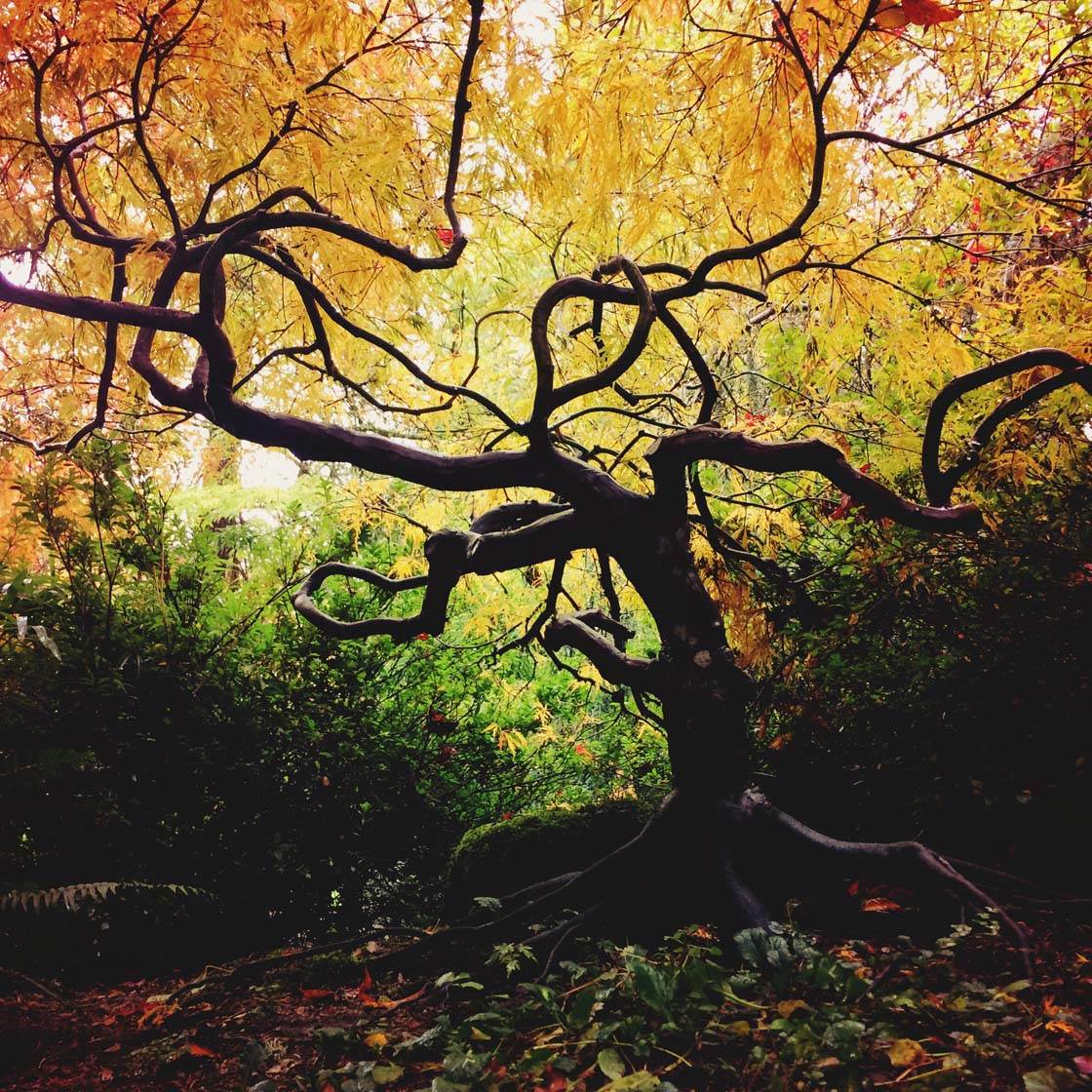
Low angles are great for creating a more dramatic image. This Japanese maple can’t be more than 3-4 feet tall, but from a low angle, it looks like an impressive tree.
By taking photos from a low angle, you can completely change your photos of children too. To see an immediate improvement in your photos of little ones, try taking a photo of a toddler from their eye level instead of from your eye level. After all, you don’t take photos of adults from two feet above their head.
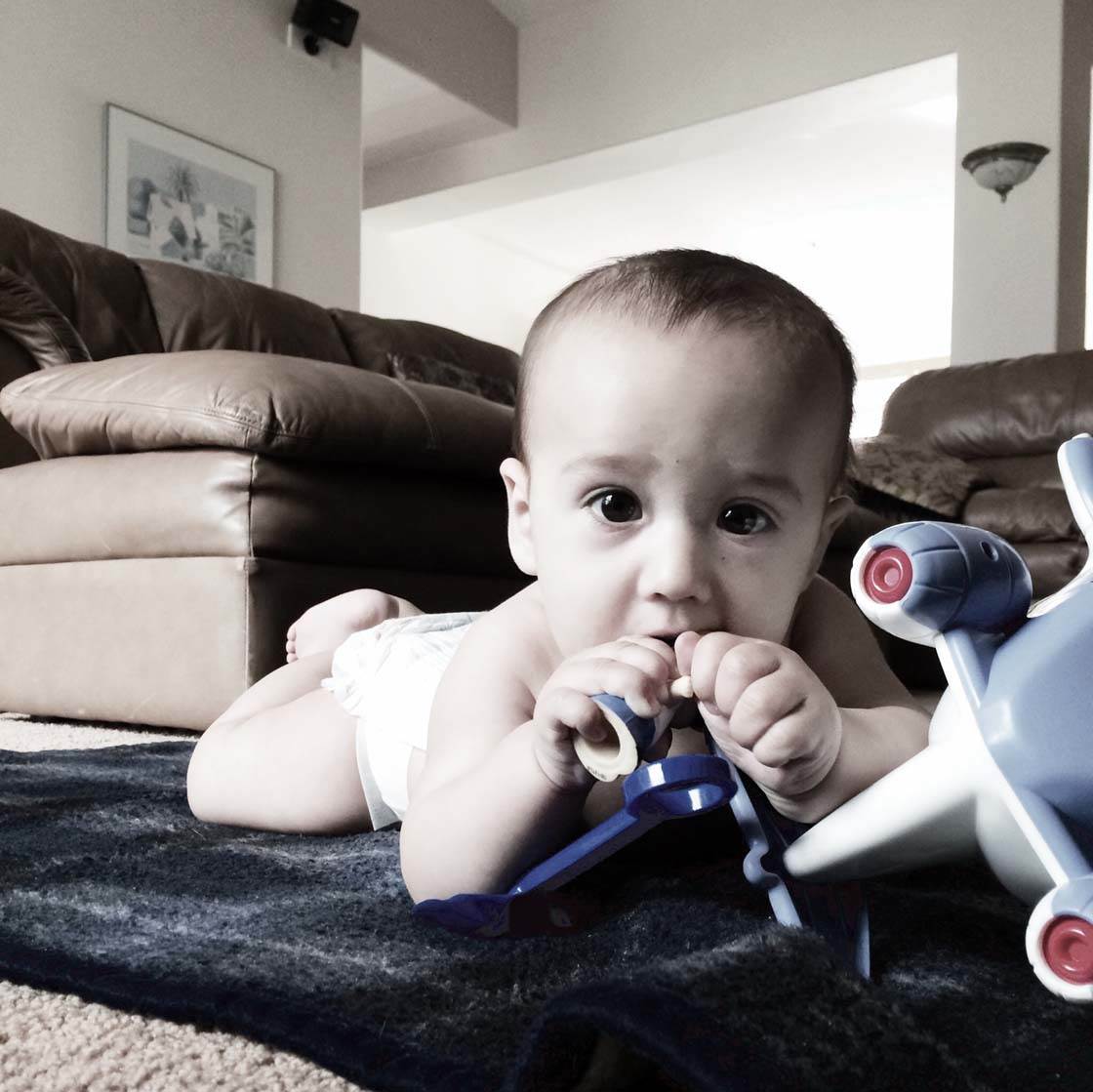
So, get down on your knees and view the world from a child’s perspective. This will give your photos a fresh perspective, making them more interesting and unique.
7. Strangers Are Friends You Haven’t Made Yet
Have you ever seen two children on a playground, or in a classroom, that didn’t know each other? They seem to have no problem striking up a conversation, or even engaging in play together.
Perhaps it’s the innocence of children that allows them to engage with others that they don’t know, or maybe its just that they’re all eager to make friends and have fun. Whatever the case may be, we don’t all have that gift anymore. I know I don’t. Still, we can learn a photography lesson from a child’s fearless approach to strangers.
For some reason, when I travel I have more courage, and I can go up to strangers and ask to take their photo. I figure it doesn’t matter if I’m rejected, or embarrassed, because I’ll probably never run into them again.
I’ve had success in places such as Portland, San Francisco and New York, to name a few. Sure, you’ll get a few weird looks, but if you approach people in the right way and tell them why you’re interested in their photo, they’ll be more willing to play with you.
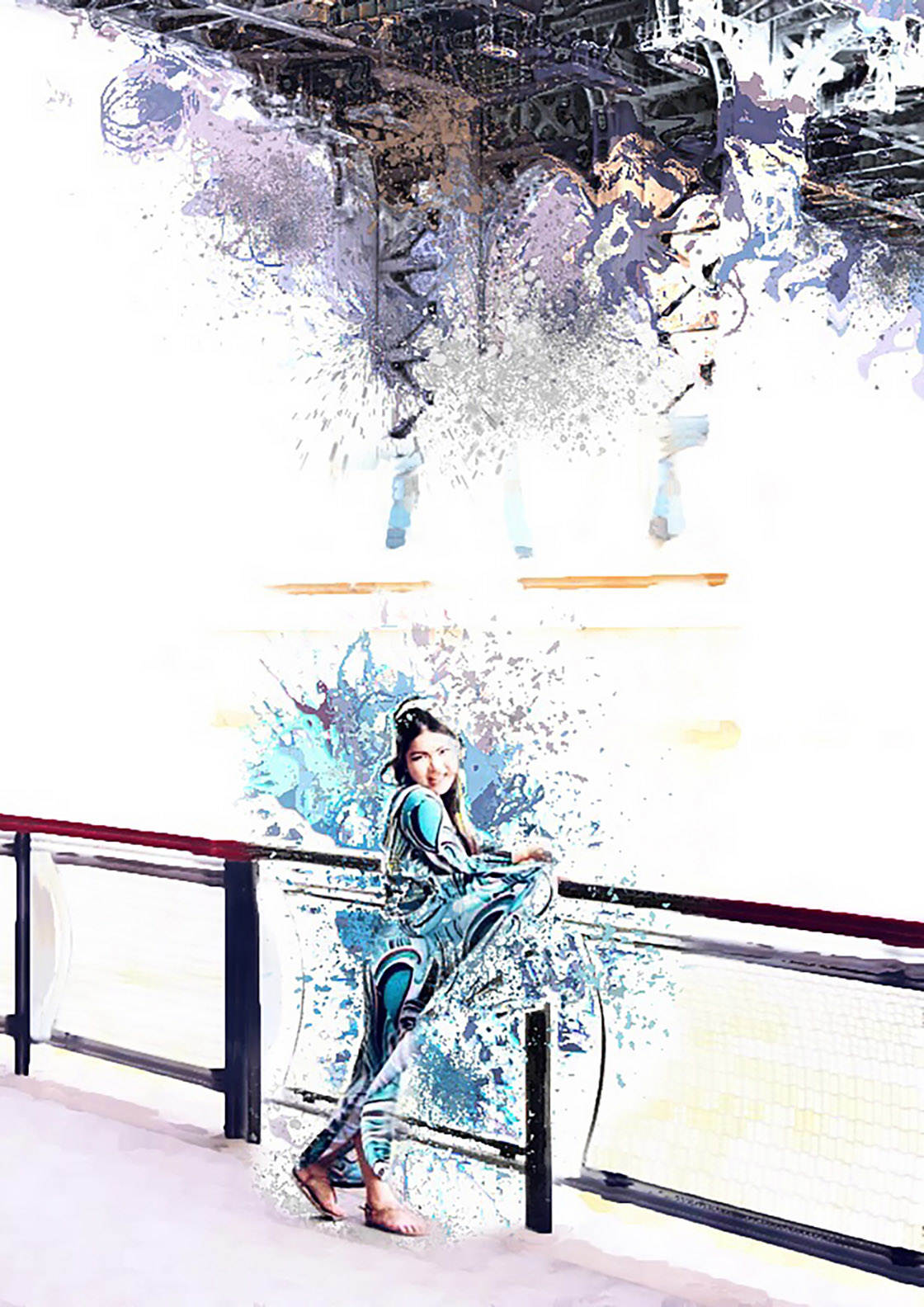
This is a photo of a girl from Japan that I met in New York. Not only was she a beautiful model, but she ended up showing me around the city and becoming a friend of mine. None of that would have happened if I didn’t take a chance and ask to take her photo.
8. Test Those Boundaries
Kids love to test their boundaries. If you’re a parent, or you’ve worked with young children, you’ve surely had a child look you directly in the eyes as they did something you told them not to do. Essentially, they want to know how real these boundaries are. We can do the same, while being smart about it.
Years ago, I respected every fence and do not enter sign. Then, I met a friend who interpreted them as signs that read, “you definitely need to explore here.” She liked to say that it was easier to ask for forgiveness than permission. I also had a wedding photographer tell me the same thing a few years later.

Still, to this day, none of us have been in trouble for trespassing. Now, I’m not advocating that you go out and break the law, but maybe don’t be scared to go somewhere you’re not supposed to, for a few photos.
I was recently out at Thunder Hole in Acadia National Park in Maine, with a few other professional photographers. There was a staircase with handrails and a short fence on both sides, plus another larger fence at the bottom, to keep people from getting too close to the violent waves crashing against the rocks.

There weren’t any unique shots worth taking from the stairs, so I looked around for something better. This was a crowded tourist spot, without any rangers to keep us in line. I figured I would hop the fence to take a quick look and see if there was an interesting composition.
There was, and I motioned for my friends to join me. Not a minute later, the fenced off area had about a dozen tourists walking on the rocks and taking photos of my friend laying on the rocks, trying to coax a seagull up to his lens.
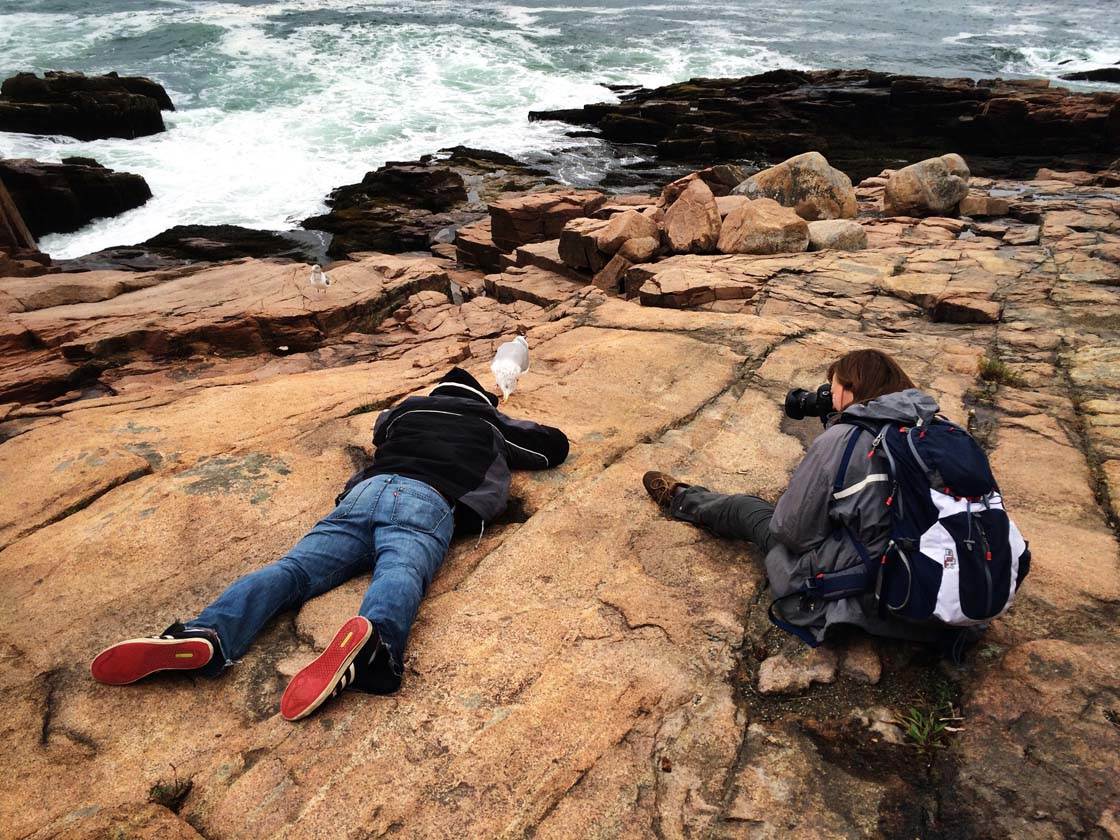
Notice that Mike Mezuell and Shannon Kalahan are both using low angles in the image above. Those are two pros at work right there!
One last thing about testing boundaries – be smart, know the area you’re in. Do people in that area shoot first and ask questions later? Is this government land? Is it really safe? Don’t climb over a fence to take a photo on the edge of a slippery cliff! Assess each situation as you come across it, and stay safe.
9. Use Repetition To Master New Skills
Young children use repetition as a way to master new skills. Though it may look like they’re doing the same thing every time, they make subtle changes as they work on whatever it is that they’re doing. And, if they should master the skill, they may still choose to repeat the activity over and over, just because they enjoy having mastered something.
Repetition is really just another way of talking about practice. If you want to get better at photography, you need to practice a lot. It really is just like any other skill.
When I decided I wanted to become a professional photographer, I essentially became obsessed with photography. I took photos every day. I immersed myself in photography.
I was determined to keep trying, until I got to the level I felt was good enough to charge people for my skill. Don’t get me wrong, I haven’t stopped practicing. I still practice almost daily to keep my skills sharp.
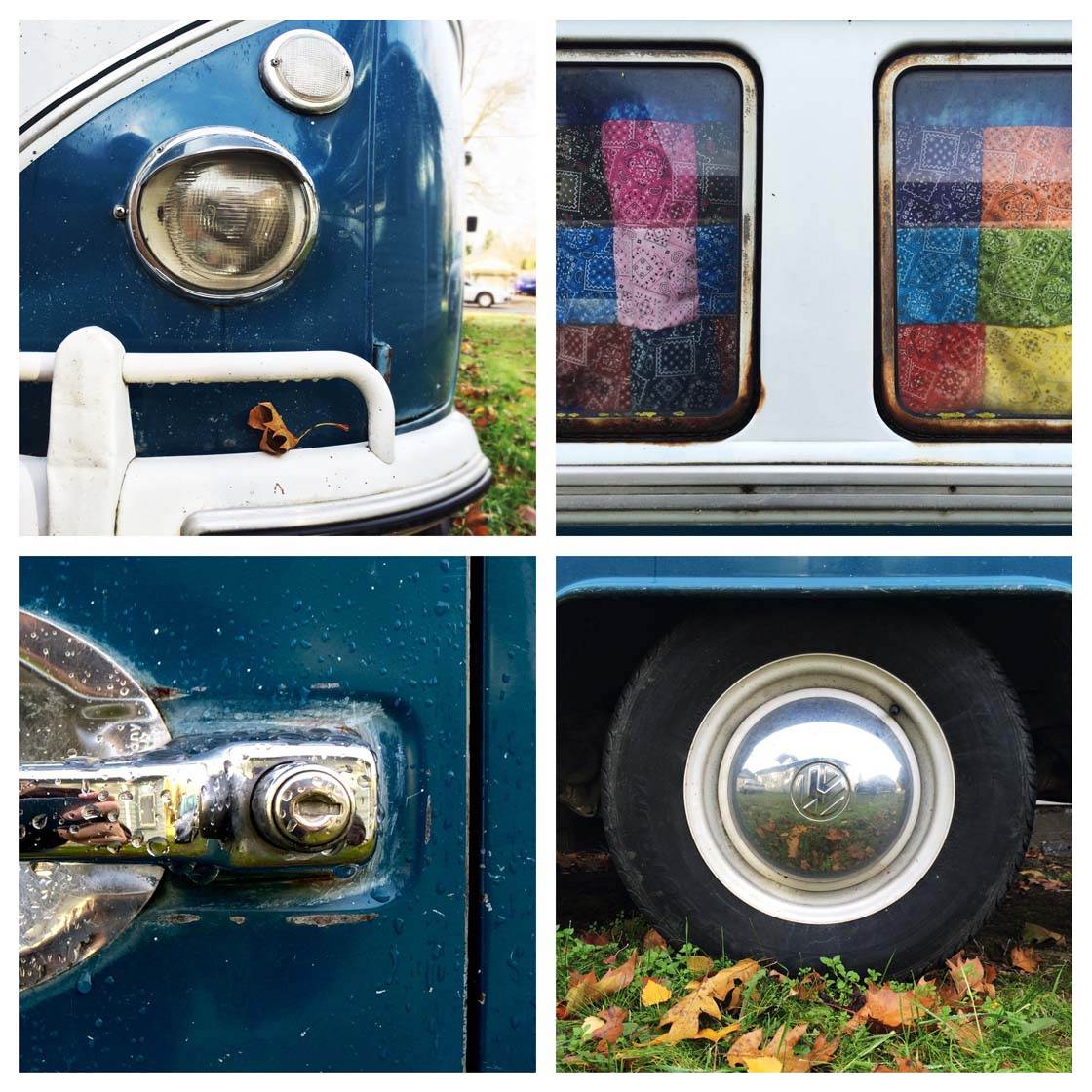
A fun challenge to practice repetition is to take 50 photos of the same subject, but change something about the image every other photo, or every 5 photos if that’s too hard.
Above, I took roughly 50 photos of my neighbor’s van. I think I ended up with 25 unique images in two minutes. Combining your images into a photo collage is a great way of displaying a set of images of the same subject.
10. Sharing Is Caring
Sharing our work can be really tough because it leaves you vulnerable to critique. Children are amazing in that they don’t worry about critique. They’re so happy with the squiggly purple line they painted, that they want to show you, and have you hang it on the refrigerator for everyone to see.
I promise you sharing is a wonderful thing, especially when it comes to photography. Find a few websites or apps to share your work on, such as Instagram, EyeEm, Flickr, VSCO Cam Grid, etc. Or start your own blog to share your photography and ideas.

The sense of community and feedback will do wonders for you as an artist. If I hadn’t start my iPhone photography blog, I never would have met some amazing photographers and artists. Now, I’m blessed with some amazing friendships and a wonderful support system.


Some great tips in there with wonderful perspective. Thanks David
You’re welcome, Jason. It was fun reflecting on my teaching days to gain inspiration for this article!
Truly inspiring! It feels as if you were picking inside my head 😉 I thought I had lost the sense of wonder towards the world even though when something inside is screaming with so many ideas and wanting to learn and explore more. Thank you so much for an awesome inspiring reading! <3
I’m so glad to hear you were inspired :). If it makes you feel any better, we all get creative blocks. I can get stuck for weeks at a time. Just gotta keep pushing forward!
Very original read! Interesting points you make here.
Thank you, that’s quite the compliment. I think my background, and experience working with kids, came in handy on this one.
Great advice on changing one’s world view, whether you capture it in a photo or not. Thank you
Absolutely. Sometimes, while driving without a camera, I find myself repeatedly turning my head to admire the light of a scene. I should probably stay focused on the road, but I can’t ignore the sense of wonder.
Very inspiring, love the way a child sees the world. Thank you !
You’re welcome, Jolanda. It’s kind of sad that we lose that bit of wonder over the years. Luckily, we can always regain it, with a little effort.